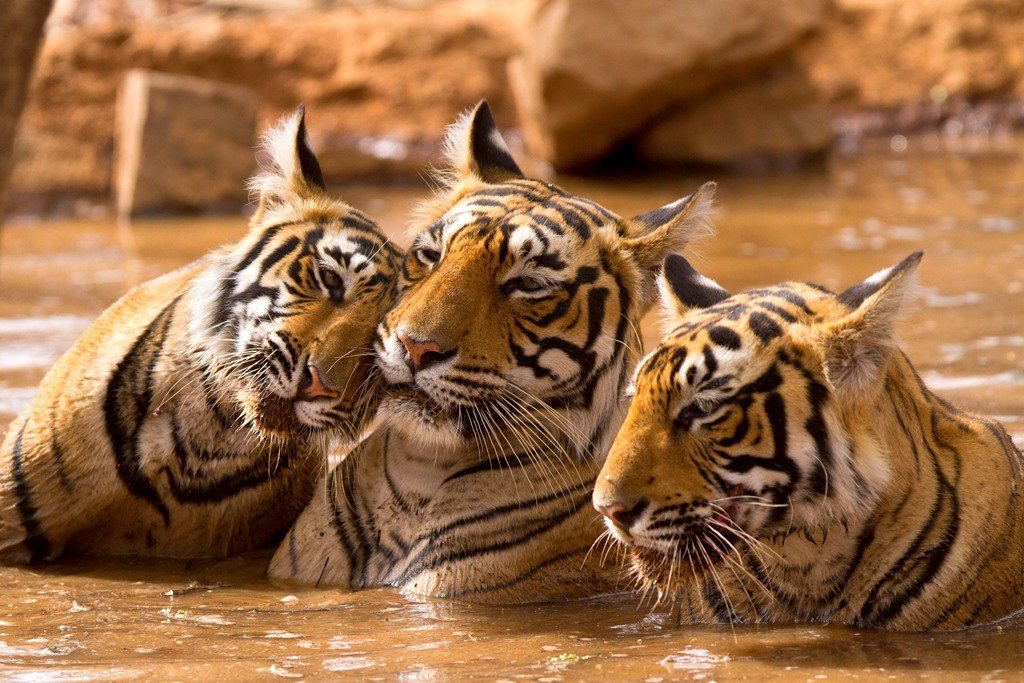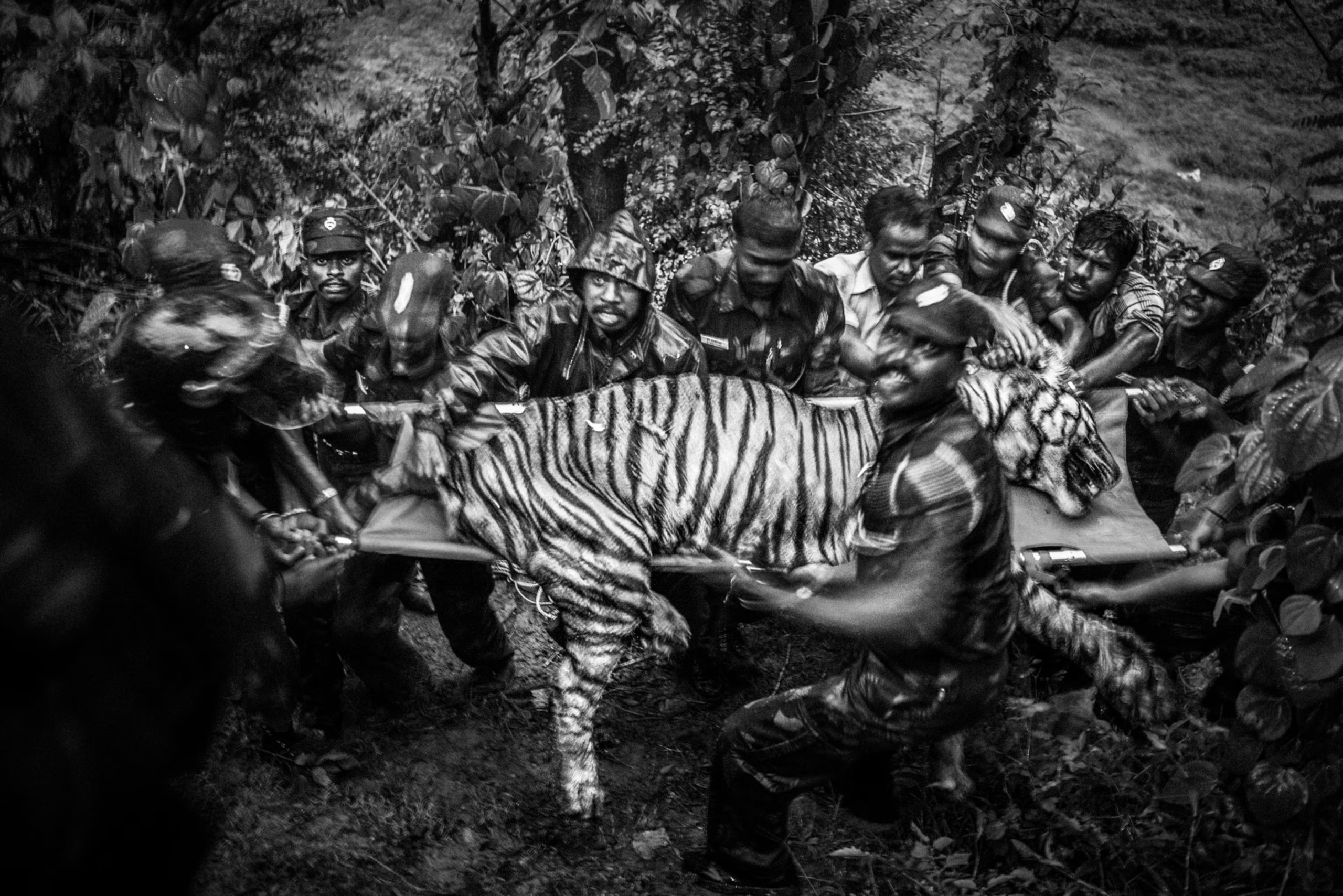Mob Kills Royal Bengal Tiger in Assam: A Tragic Scene in Golaghat
Mob kills Royal Bengal tiger in Assam in a tragic and alarming incident that unfolded in the state’s Golaghat district, highlighting the escalating conflict between rural communities and endangered wildlife. The villagers reportedly attacked the tiger after it had killed livestock and was seen as a threat to human safety. What followed was a brutal scene of chaos and violence, ending with the tiger’s death and dismemberment.

This shocking event brings to light the broader crisis of human-wildlife conflict in India, where rural populations living near forests are increasingly at odds with nature. Moreover, it raises critical questions about the effectiveness of India’s wildlife protection policies and the urgent need for solutions to coexist with large carnivores in rapidly shrinking habitats.
How a Mob Killed a Royal Bengal Tiger in Assam’s Golaghat District
Accordingly, local forest officials reported that the tiger ventured into the village located around 20 kilometers from Kaziranga National Park — a UNESCO World Heritage Site renowned for its wildlife. Subsequently, reports suggest that nearly a thousand villagers, armed with machetes and sharp tools, surrounded and attacked the big cat after it allegedly killed livestock in the area.
Furthermore, top forest official Gunadeep Das confirmed that the tiger died from sharp injuries rather than gunshot wounds. Moreover, the carcass was found with parts of its skin, face, and limbs missing. It was retrieved in the presence of a magistrate and sent for a postmortem examination to ensure a thorough investigation.
Mrinal Saikia, a lawmaker from Assam, condemned the act publicly on social media, calling it “a very painful act” and stressing the need for accountability and stronger wildlife protection mechanisms.
Focus Keyphrase: “Mob kills Royal Bengal tiger in Assam”
Throughout this blog, the focus keyphrase “Mob kills Royal Bengal tiger in Assam” will be explored in depth. Specifically, it will examine the socio-environmental dimensions of such incidents and their broader implications for conservation in India.
Historical Context: Human-Tiger Conflicts and Mob Killings in Assam
Assam is no stranger to human-animal conflicts. The state, home to lush forests and biodiversity hotspots like Kaziranga, Manas, and Nameri National Parks, has long faced challenges in managing its rich wildlife alongside growing human populations.

The Royal Bengal tiger, India’s national animal and a symbol of strength and power, has often found itself at odds with villagers when forced out of its habitat. Furthermore, according to the state forest department, this is the third tiger killing reported in Assam this year alone, thus signaling a disturbing trend.
Conservation Success and Its Irony: Rising Tigers and Increasing Mob Kills in Assam
Ironically, conservation efforts in Assam have shown remarkable success. Data from the forest department indicates that the tiger population in the state rose from just 70 in 2006 to 190 in 2019. This growth, fueled by improved protection, habitat restoration, and anti-poaching efforts, inevitably also brings with it an increased likelihood of human-tiger interactions — especially in areas where habitat corridors have shrunk or disappeared.
These increasing tiger numbers, while a positive development on paper, can, however, turn tragic if not matched with robust human-wildlife conflict mitigation strategies.
Understanding Human-Wildlife Conflict Behind Mob Kills of Royal Bengal Tigers in Assam
What Is Human-Wildlife Conflict?
Human-wildlife conflict refers to the interaction between wild animals and people that leads to negative results for both. In Assam, such conflicts often involve elephants, leopards, and tigers, primarily because their natural territories are shrinking due to urbanization, deforestation, and infrastructure development.
In such cases, when a mob kills a Royal Bengal tiger in Assam, it is often a desperate and violent response, primarily rooted in fear, economic loss, and a perceived lack of protection from authorities.
Root Causes Behind Mob Kills of Royal Bengal Tigers in Assam
- Shrinking Habitats: Deforestation and encroachment on forest land have left tigers with fewer safe zones.
- Lack of Wildlife Corridors: As forest patches become increasingly isolated, tigers are often forced to cross through human settlements. Consequently, this raises the risk of dangerous encounters between people and wildlife.
- Livelihood Pressures: Villagers who lose cattle or crops to wild animals suffer financially and demand swift retaliation.
- Insufficient Compensation Schemes: Delay in or lack of compensation for losses caused by wildlife fuels resentment.
- Limited Awareness: Many rural residents lack access to information about wildlife laws or conservation importance.
The Role of Kaziranga National Park in Human-Tiger Conflict and Mob Kills in Assam
The proximity of the village to Kaziranga National Park — one of India’s premier wildlife reserves — adds a crucial dimension to this tragedy.While Kaziranga is famed for its successful conservation of the one-horned rhinoceros, its handling of carnivore movement across surrounding regions has nonetheless come under increased scrutiny.
As a result, the incident has sparked debate among conservationists about whether enough has been done to protect buffer zones and corridors that link protected areas. Without such protections, animals are bound to stray into human settlements, making confrontations inevitable.
Legal Protection and Challenges Surrounding Mob Kills of Royal Bengal Tigers in Assam
The Royal Bengal tiger is protected under the Wildlife Protection Act of 1972, which classifies it as a Schedule I species — affording it the highest level of protection. Consequently, poaching, hunting, or trading of tiger parts is strictly prohibited and punishable by severe penalties, including imprisonment.
In theory, the law offers strong safeguards. In reality, enforcement remains inconsistent, especially in remote areas where forest departments are under-resourced and frequently face hostility from local populations.
Reactions and Political Fallout Following Mob Kills of Royal Bengal Tigers in Assam
Following the tiger’s death, state officials have promised strict action. Meanwhile, a case has been registered, and investigations are underway to identify those involved in the mob attack.
However, as videos of the dismembered tiger went viral, calls grew louder for systemic changes — not just punitive measures. Environmental groups urged the government to improve awareness programs, bolster forest patrolling, and expand compensation schemes to build trust with villagers.
Community Involvement in Conservation
Long-term solutions must include community-based conservation. Rather than viewing tigers as threats, local communities should be empowered to see themselves as protectors and beneficiaries of wildlife conservation.
Initiatives such as eco-tourism, wildlife monitoring, and forest protection committees have shown promise in other Indian states. Assam could benefit from replicating and scaling these models.
The Global Picture: Tigers in Peril
The killing of a Royal Bengal tiger in Assam is part of a broader crisis. Globally, tiger populations have dwindled to around 3,900 in the wild, with India home to approximately 75% of them.
Every single tiger death is a blow not only to biodiversity but to global conservation efforts. The international community closely watches incidents like this, viewing them as indicators of how committed a country is to protecting its natural heritage.
Next Steps: Strengthening Wildlife Policy and Practical Reforms
1. Strengthen Wildlife Corridors
Linking protected habitats through designated corridors allows tigers to roam safely and reduces their encounters with humans.
2. Enhance Village Outreach Programs
Conservation education, wildlife response training, and conflict resolution workshops can turn hostile communities into allies.
3. Improve Compensation Mechanisms
Faster, more generous compensation for livestock and crop losses can deter mob violence.
4. Upgrade Forest Department Capabilities
Equip field officers with better technology, vehicles, and legal support to act swiftly and effectively.
5. Penalize Illegal Killings
Therefore, setting legal precedents through strict penalties sends a clear message that wildlife crimes will not be tolerated.
A Call for Coexistence
Ultimately, the Earth is a shared home for countless species, not just humans. When a mob kills a Royal Bengal tiger in Assam, it is not merely an act of violence — it is a symptom of a deeper ecological and social breakdown.
Conservation is no longer just about protecting animals in reserves. It’s about reimagining how human societies live alongside nature. The challenge is immense, but so is the opportunity. India, with its rich biodiversity and cultural heritage, can lead the way.
Beyond Mourning, Toward Change
The image of a mutilated tiger lying in a field in Assam is a sobering reminder of what is at stake. If we do not act with urgency and compassion, stories like this will become more common. Protecting tigers means protecting the forests, the people, and the future of biodiversity in India.
The time to act is now. Let this incident not fade into just another statistic. Let it galvanize change — in policy, in community engagement, and in our collective conscience.





特に「耳かき系」や「環境音系」のASMRが好きで、実際に比較したレビューをこちらにまとめました
特に「耳かき系」や「環境音系」のASMRが好きで、実際に比較したレビューをこちらにまとめました
Your passion for your subject matter shines through in every post. It’s clear that you genuinely care about sharing knowledge and making a positive impact on your readers. Kudos to you!
Good post! We will be linking to this particularly great post on our site. Keep up the great writing
I do not even understand how I ended up here, but I assumed this publish used to be great